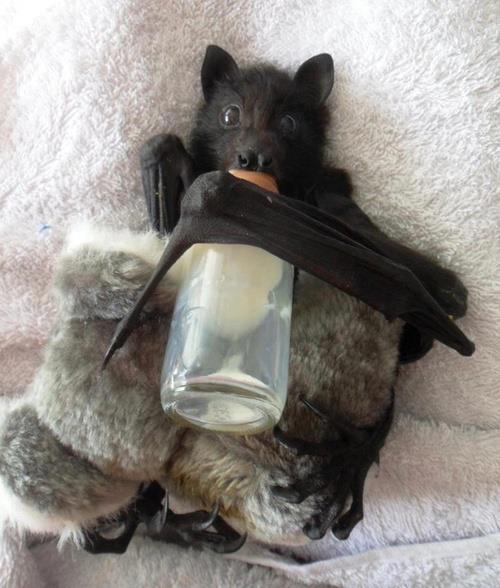For bats being amazing examples of evolutionary resilience and fascinating, intelligent creatures with complex, long lives that perform invaluable ecological roles, we humans don’t seem to appreciate them very much. They’ve had a bad rep in cultures around the world due to their association with the night for millennia, but what’s this based on, really? Fear of the dark? Jealousy? Our imaginations — which can make almost anything out to be our “enemy”?
 Like many other things deeply ingrained in our social consciousness, these feelings have been added into our speech patterns. We often use an association with bats to point out odd or unfavorable behavior.
Like many other things deeply ingrained in our social consciousness, these feelings have been added into our speech patterns. We often use an association with bats to point out odd or unfavorable behavior.
Take for instance:
“Without my glasses, I’m blind as a bat.”
“From his erratic behavior, we were sure he had bats in the belfry.”
“She ran away like a bat out of hell.”
Well, how about this:
“Without my glasses, I’m blind as a bat. No, really I’m fine — I don’t need them. My sense of smell and hearing are better than using sight anyway. Oh, and I’ve been around for 50 million years, so I’m pretty sure I know the lay of the land anyway, so NBD. By the way, I provide an invaluable service to humankind by eating the insects which seem to cause them so much trouble.”
OK, a bit wordy, but you get the idea – bats are freakin’ awesome. They’re the only mammal that legitimately flies – having developed wings out of what used to be hands (look at their skeleton and you’ll see how crazy this is; it would be like having webbed fingers that go the length of your body!).

 And they live nearly everywhere on earth, except for some small, isolated islands. Now that’s what I call evolutionarily resilient.
And they live nearly everywhere on earth, except for some small, isolated islands. Now that’s what I call evolutionarily resilient.
In spite of all this awesomeness, bats in America are under threat from a new disease called White-Nose Syndrome. This disease is caused by a fungus which is taking hold in caves along the entire northeast corridor. It infects bats while they’re hibernating, so their bodies have essentially shut down and can’t fight it. The fungus causes their flesh to deteriorate as the spores take hold and suck the water and nutrients out of the bat. This causes them to wake up and search for food (which they can’t find, because it’s winter), wasting the rest of their fat reserves and leading to starvation.
The fungus appeared in New York in 2007 and has since killed millions of bats who seem to have little to no way to fight it. It came to New York from Europe; however, the bats across the pond don’t seem to mind nearly as much as American bats. This leads some to believe that they’ve evolved to be resistant to it (think Black Plague resistance in European populations — or lack thereof when smallpox came to America).
But that’s not to say all hope is lost! Scientists across the country are performing research to learn more about the fungus — mapping where it’s been found, how it takes hold, and performing experiments to prevent the onset of the disease.
(You can learn more here, here, here, here, and here.)
But one of the best ways to help save the bats is having a well educated population that’s invested in the little furry flying guys. Lucky for YOU, there’s an exhibit at HMNS Sugar Land opening on Sat., Jan. 18 all about bats! Come to Masters of the Night: The True Story of Bats and learn all about these amazing creatures (and, come spring, you can check them out in Houston under the Waugh St. Bridge).
Nota bene: Baby bats are super adorable. I hereby submit that they should become part of the never-ending flood of baby animal pictures shared around on social media as to better their public perception.
Don’t believe me? Just check these out.











